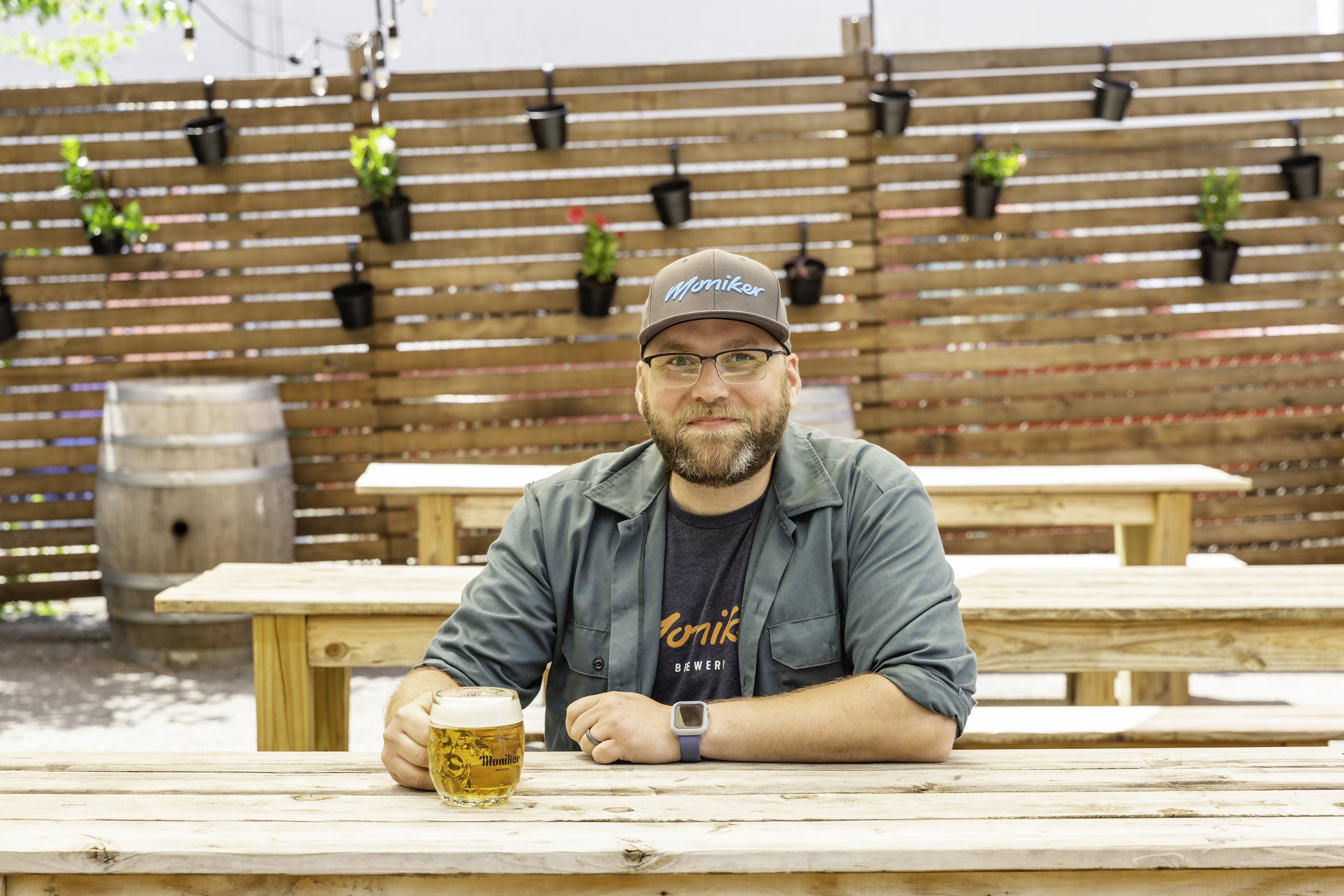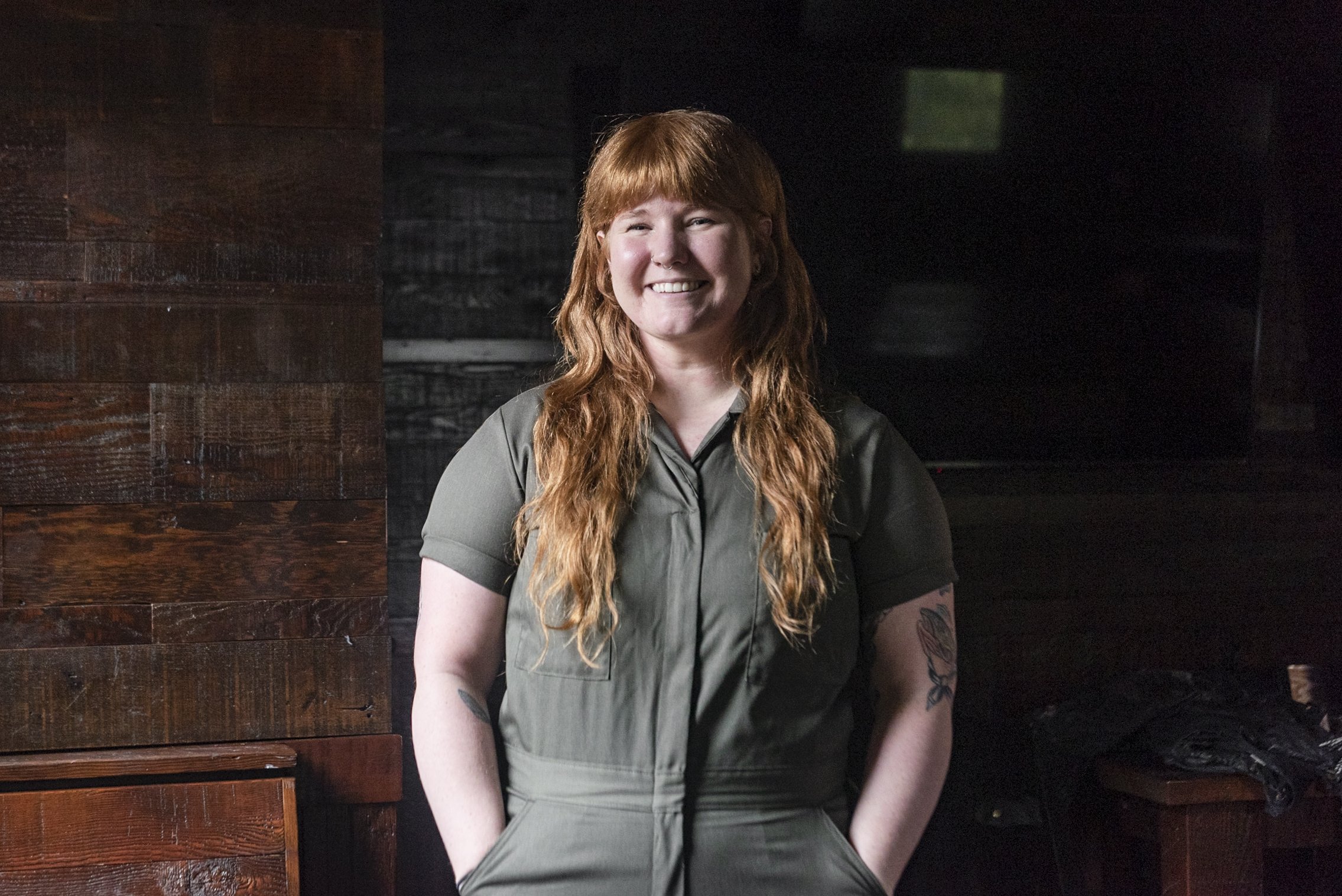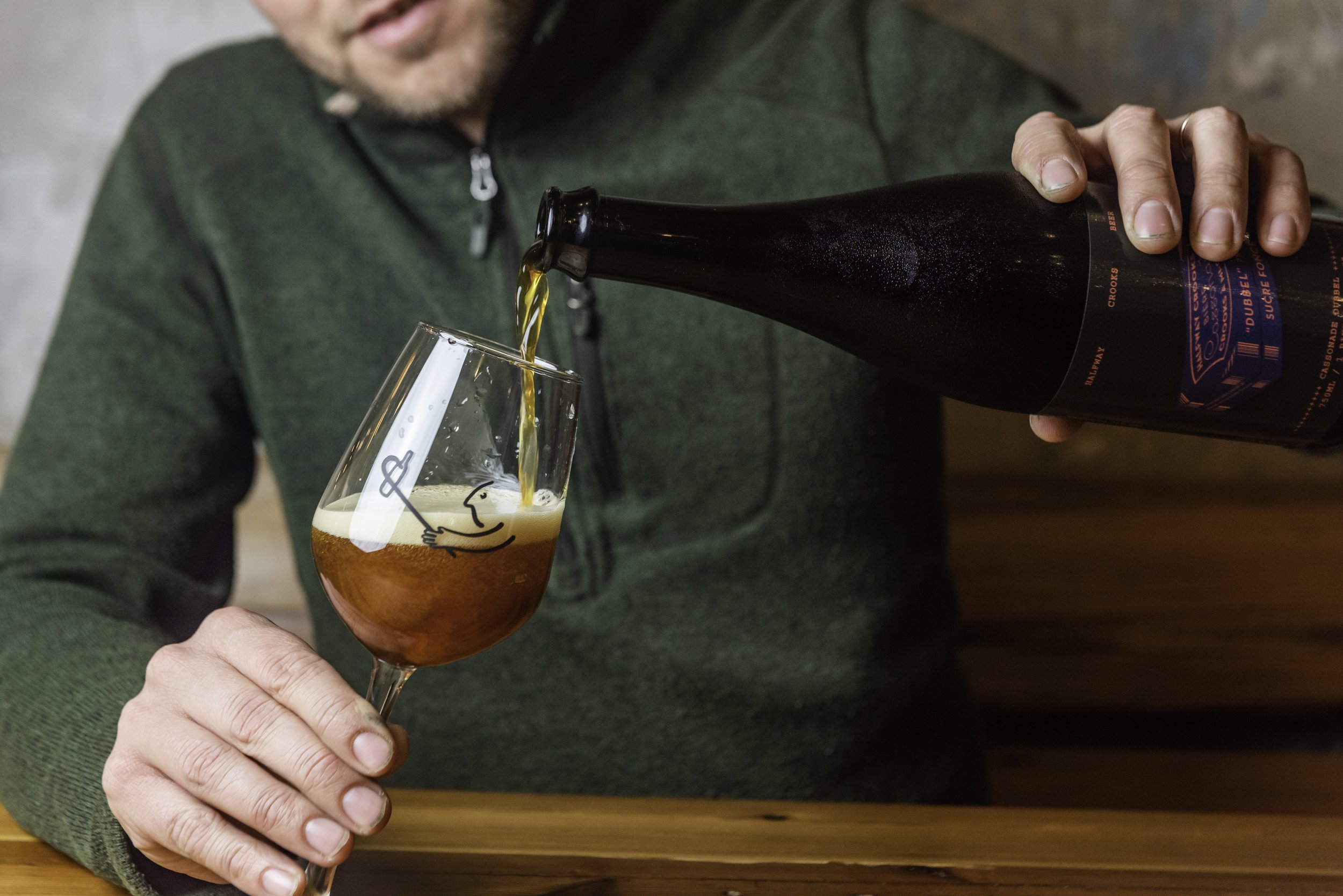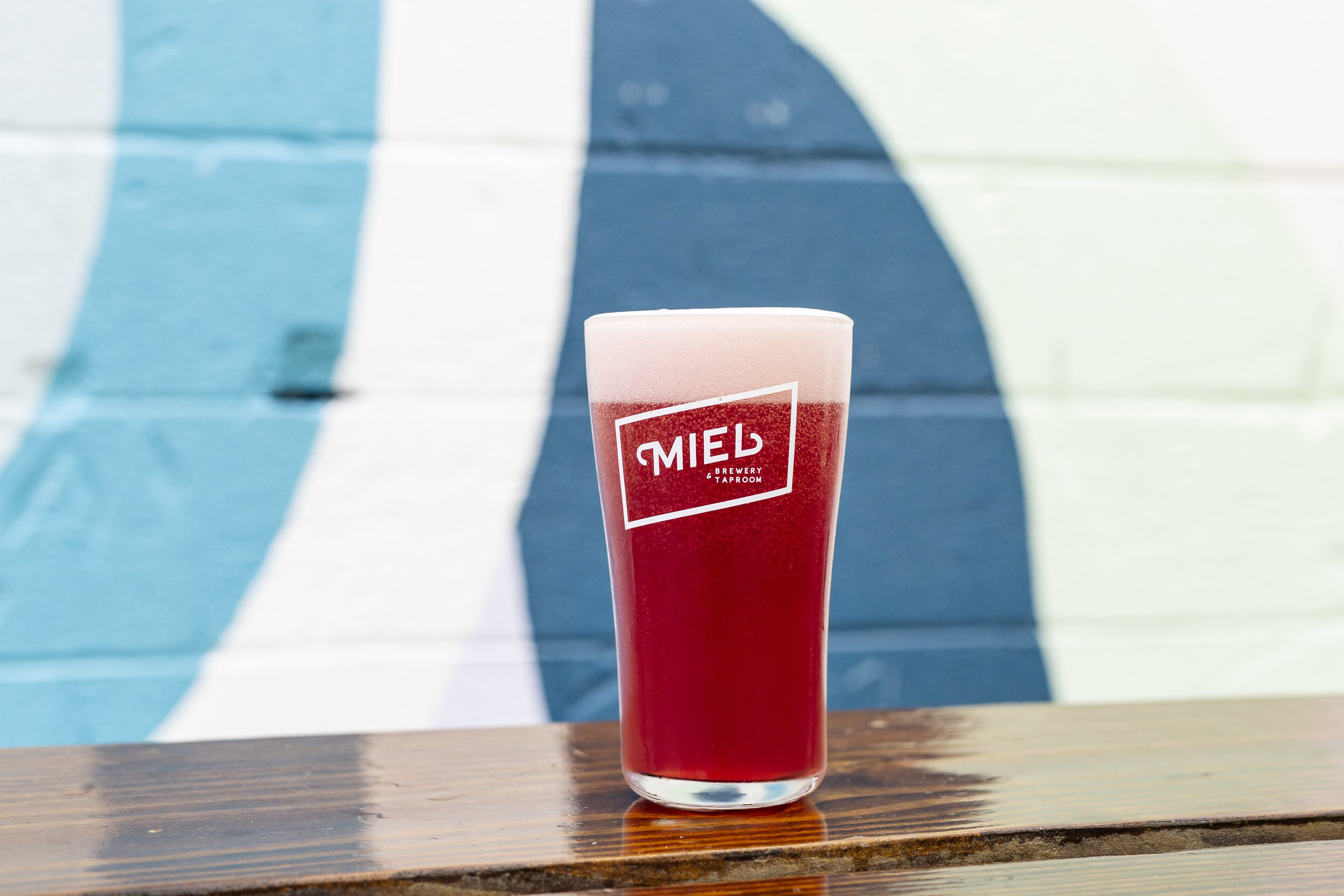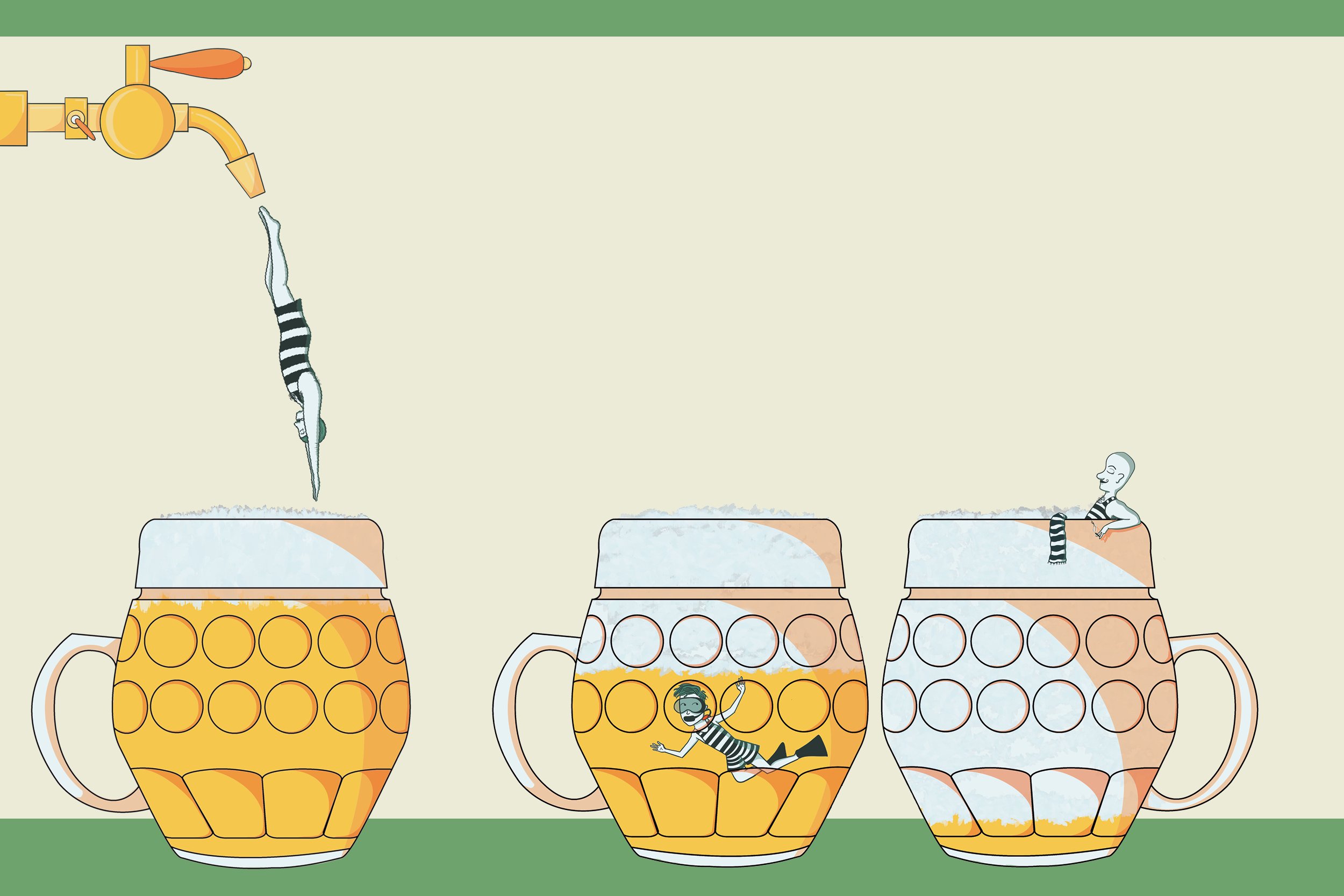Getting Weird with Thiols
Brewer Ben Estes plays with funky flavors and techniques at Moniker Brewing.
photos: raeann serra
While he was getting his masters in biochemistry at SUNY College of Environmental Science and Forestry, Ben Estes had other priorities, too. “I had to give a one-hour presentation on something other than my thesis,” Estes explains, “So I did a presentation on brewing and fell in love with it even more.” Now head brewer at Moniker Brewery in Providence, Estes uses his chemistry background—and a deep knowledge of yeast, honed during his time brewing for Cortland Beer Company and Proclamation Ale Company—to explore another aspect of beer: thiols.
“Thiols are organic sulfur compounds found naturally in hops, fruits, and grains,” says Estes. They’re responsible for a variety of flavors and aromas, including black currant, grapefruit, guava, and passion fruit. Different brewing techniques allow these juicy, tropical, and citrusy notes to be expressed in various ways.
Though relatively new as a recognized concept in beer, thiols have always existed, perhaps most famously in wine. New Zealand Sauvignon Blanc is specifically known for its acidic tropical notes, thanks to thiols. “It’s from yeast expressing a particular enzyme,” explains Estes. “It starts to break down the compound that will release the thiol.”
There are free thiols—aromatic compounds that can be smelled and tasted—and bound thiols, which are chemically bonded to other compounds. “[This] makes them inert,” says Estes. “They’re still there, but we don’t smell and taste them the same way.”
Older hop varieties like Cascade contain these fragrant compounds. “Most of the sexy West Coast-style hops have thiols,” Estes adds. “New Zealand and Australian hops have them as well.” In Moniker’s thiolized IPA, ‘Stun Gravy,’ Estes deploys a mix of Cashmere, Mosaic, Citra, and Galaxy hops.
Brewers use a variety of techniques to express thiols. Mash hopping an IPA, for example, is thought to release free thiols. Some brewers add Phantasm Powder, made from Marlborough New Zealand Sauvignon Blanc grape skins. Estes prefers modified yeast strains from Omega Yeast. “Essentially the yeasts express certain enzymes regardless of conditions, allowing us to get free thiols out of bound thiols, which will really increase your overall flavor production,” he explains.
As thiols get more attention, Estes predicts things are going to get weird. After all, one person’s hazy Triple IPA hop dream is another’s overhyped, unctuous nightmare. “You do have to be mindful, because if you go too extreme, the result can be kind of unpleasant,” says Estes.
And while tropical IPAs feel naturally suited to the thiolized treatment, Estes thinks other styles can benefit from a little extra fruity expression. “One of my favorites is called Sun Sick Day. It’s a mango Gose with thiol yeast, it’s so nice and tropical,” he says.“That bit of acidity and mango and a little bit of salt gives your palate a direction to look at with the flavors.”
Thiols are a tool to point you in the direction of a layered beer, but it shouldn’t be the first and only thing you taste, says Estes. “It reminds me of people making 100 IBU beers, making beer more and more and more bitter to the point where no one wants to drink it anymore,” he adds. “As Americans, we tend to find the extremes and then peel back.”

